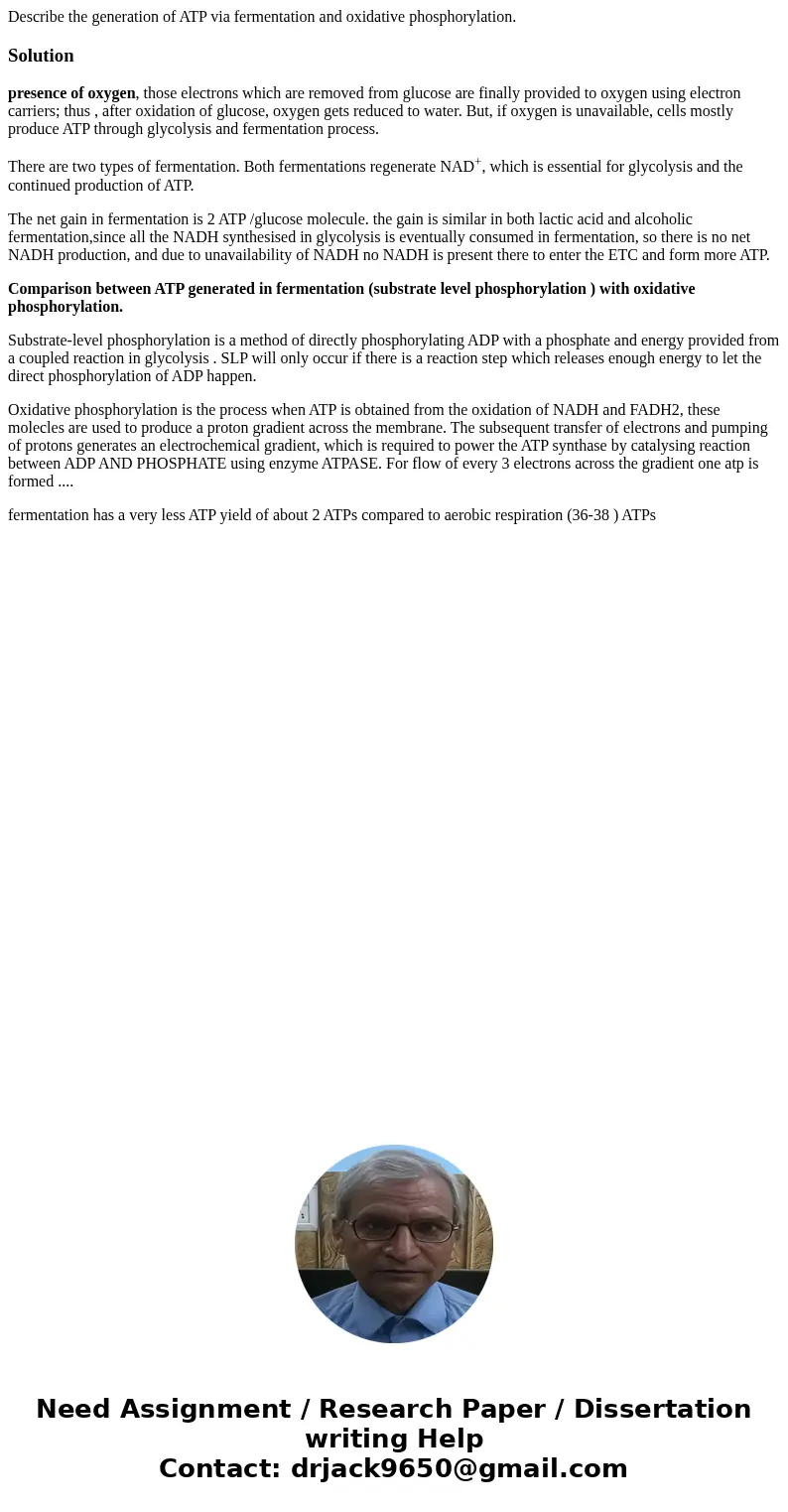Describe the generation of ATP via fermentation and oxidativ
Describe the generation of ATP via fermentation and oxidative phosphorylation.
Solution
presence of oxygen, those electrons which are removed from glucose are finally provided to oxygen using electron carriers; thus , after oxidation of glucose, oxygen gets reduced to water. But, if oxygen is unavailable, cells mostly produce ATP through glycolysis and fermentation process.
There are two types of fermentation. Both fermentations regenerate NAD+, which is essential for glycolysis and the continued production of ATP.
The net gain in fermentation is 2 ATP /glucose molecule. the gain is similar in both lactic acid and alcoholic fermentation,since all the NADH synthesised in glycolysis is eventually consumed in fermentation, so there is no net NADH production, and due to unavailability of NADH no NADH is present there to enter the ETC and form more ATP.
Comparison between ATP generated in fermentation (substrate level phosphorylation ) with oxidative phosphorylation.
Substrate-level phosphorylation is a method of directly phosphorylating ADP with a phosphate and energy provided from a coupled reaction in glycolysis . SLP will only occur if there is a reaction step which releases enough energy to let the direct phosphorylation of ADP happen.
Oxidative phosphorylation is the process when ATP is obtained from the oxidation of NADH and FADH2, these molecles are used to produce a proton gradient across the membrane. The subsequent transfer of electrons and pumping of protons generates an electrochemical gradient, which is required to power the ATP synthase by catalysing reaction between ADP AND PHOSPHATE using enzyme ATPASE. For flow of every 3 electrons across the gradient one atp is formed ....
fermentation has a very less ATP yield of about 2 ATPs compared to aerobic respiration (36-38 ) ATPs

 Homework Sourse
Homework Sourse